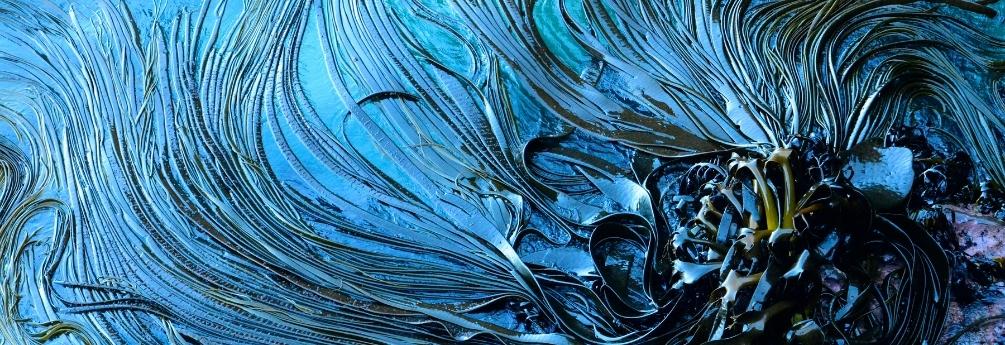Cosmetics Business’ Julia Wray explains why algae is the source of the
hottest new cosmetic ingredients.
The group called algae includes some of the most primitive life on planet earth, covering a vast swathe of species, from the slick of slime on a wet rock to majestic 30m-tall giant kelp, whose ‘forests’ provide essential marine ecosystems.
(Sponsored Post)
This diverse group of organisms has long been utilised by humans for food, medicine, fertiliser and industrial products – and the beauty industry is no stranger to the power of the slippery stuff.
Not only are algae generally packed with vitamins and minerals, amino acids and micro-nutrients, but they also boast good sustainability credentials. Photobioreactor-grown microalgae in particular have a great environmental profile, as they may be mass produced in a sustainable way without altering the ecosystem.
It’s little wonder that algae are having a ‘moment’ in beauty. According to forecaster WGSN, coastal-foraged ingredients are a hotly tipped trend for 2022, with skin care and personal care products that include seaweed extracts, kelp, sea fennel and algae tipped to become mainstream must-haves.
The ingredient edit
But what is out there, ingredient wise, for cosmetics makers to take advantage of?
Microalgae specialist Algaktiv offers Algaktiv UpLift, a purified fraction of barrier polysaccharides, designed to lift, tighten and firm the face and body, which upcycles previously discarded material from the process used by Algaktiv’s sister company Algalíf to obtain nutritional astaxanthin. The product is derived from the polysaccharide-rich cell walls of ‘stressed’ Haematococcus pluvialis microalgae, native to Iceland.
From Laboratoires Expanscience there is Algaenia, a soothing active skin care ingredient inspired by one of the least hospitable environments on earth. Algaenia is produced from Chlamydomonas acidophila, a microalgae originally found in extremely acidic waters in volcano’s crater lakes. This protects sensitive skins from overreacting to chemical stresses by inhibiting the key markers involved in inflammation.
Snow Algae Powder is an active skin care ingredient from Mibelle Biochemistry derived from the Alpine-dwelling Coenochloris signiensis microalgae. It works by stimulating the Klotho longevity gene and the AMPK energy sensor that together lead to improved cellular defences, oxidative stress resistance, cell detoxification and repair to slow down the skin’s ageing process.
For scalp and hair care, meanwhile, Lubrizol Life Science’s AlgaPūr High Stability High Oleic (HSHO) algae oil comes from microalgae sourced from tree sap. The bio-oil contains over 90% of omega 9 in a highly-stable, liquid-based formula that is said to protect the hair fibre from breakage.
For another good sustainability story, Clariant’s Epseama is upcycled from seaweeds that are not considered ‘good looking’ enough to be used as premium food products, but which still have a valuable composition. The Laminaria japonica-based product is said to address the three main causes of ageing – chronoageing, inflamm’ageing and photoageing – to reduce wrinkles, improve moisturisation and reduce spots on mature skin.
BASF’s Seanactiv, meanwhile, harnesses Fucus vesiculosus fucoidan to limit visible signs of ageing and fatigue around the eye area. Due to tidal activity, Fucus vesiculosus spends equal amounts of time underwater as it does on rock or sand, making it resistant to different conditions and temperature variations.
I certainly look forward to seeing what other algae-derived and inspired ingredients are due to launch at in-cosmetics Global 2022.
For more ‘blue beauty’ ingredients and information on other novel cosmetic materials, visit www.cosmeticsbusiness.com
Enjoyed this article? Get more by subscribing to our newsletter! https://connect.in-cosmetics.com/subscribe-to-in-cosmetics-connect/


